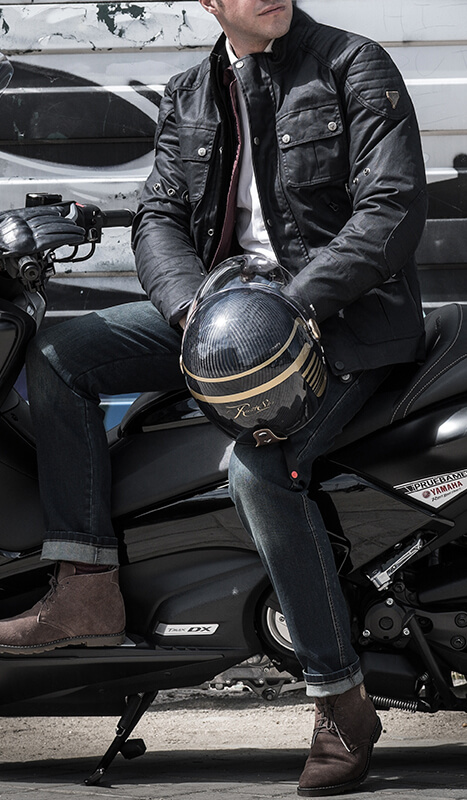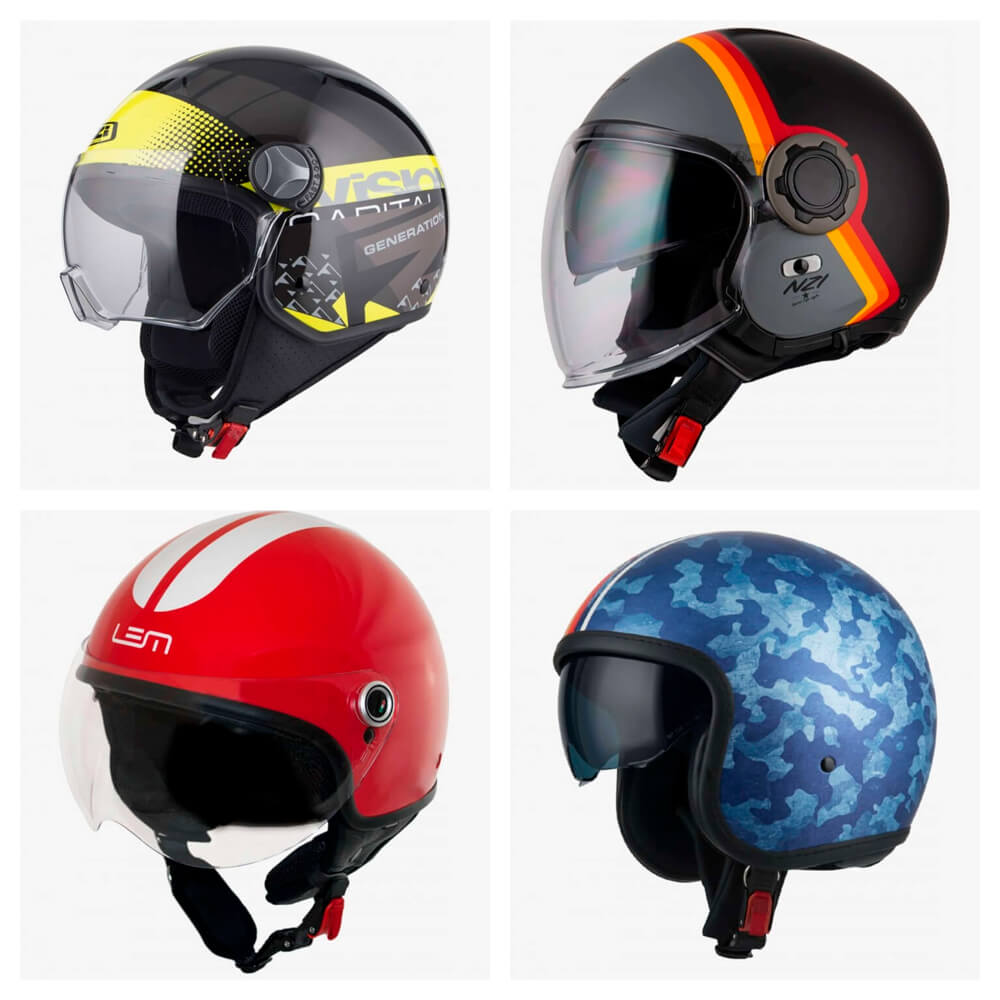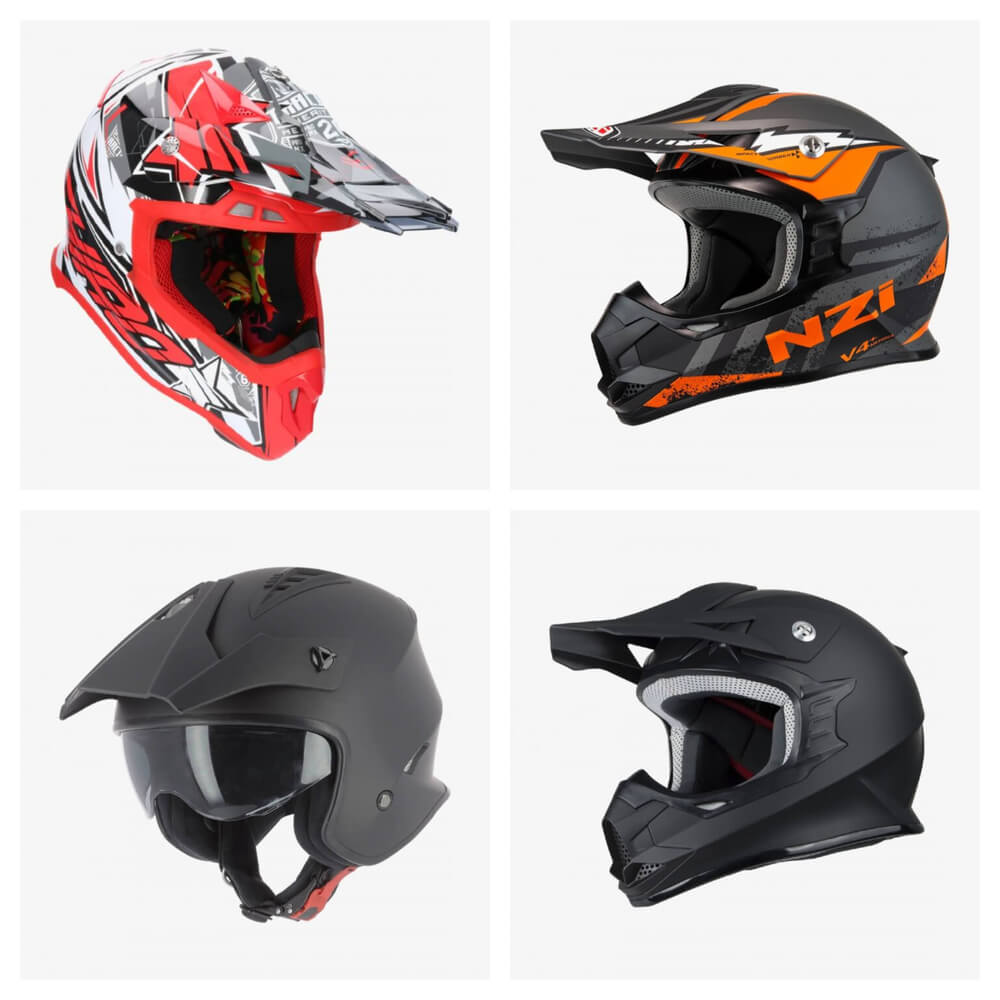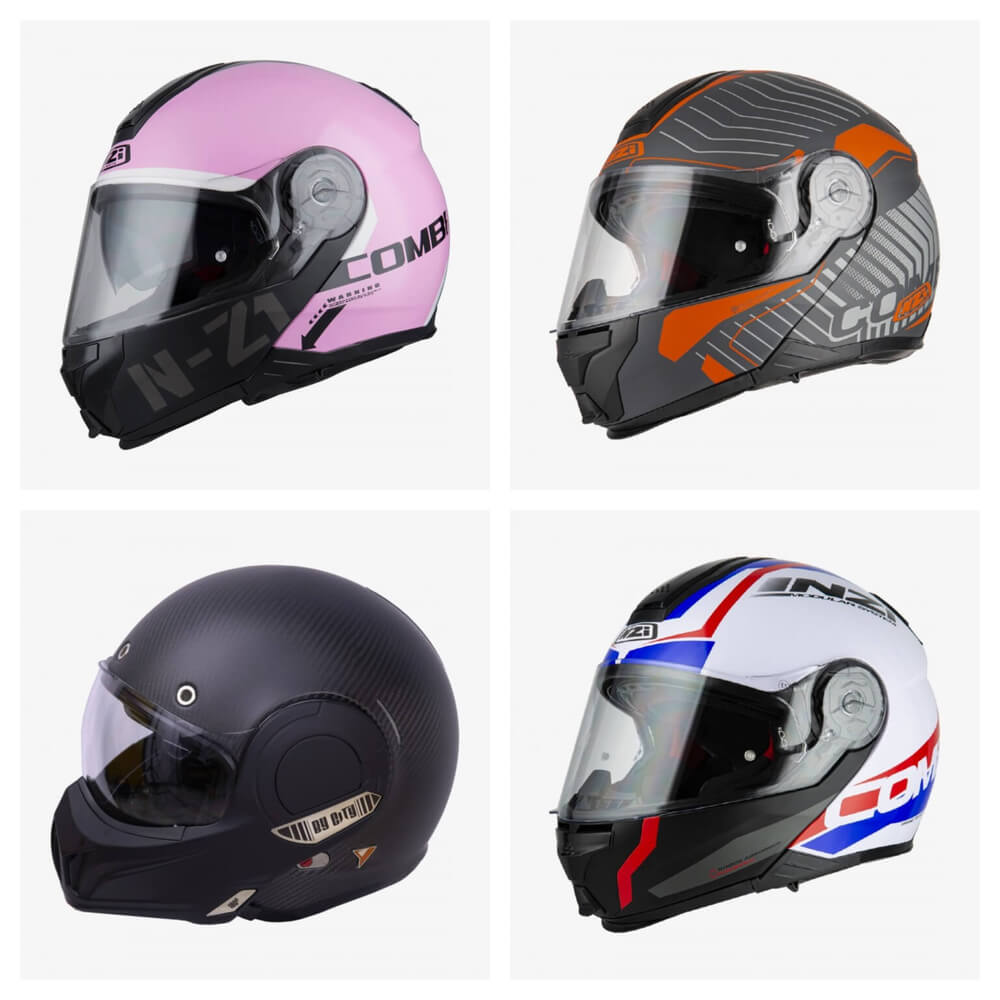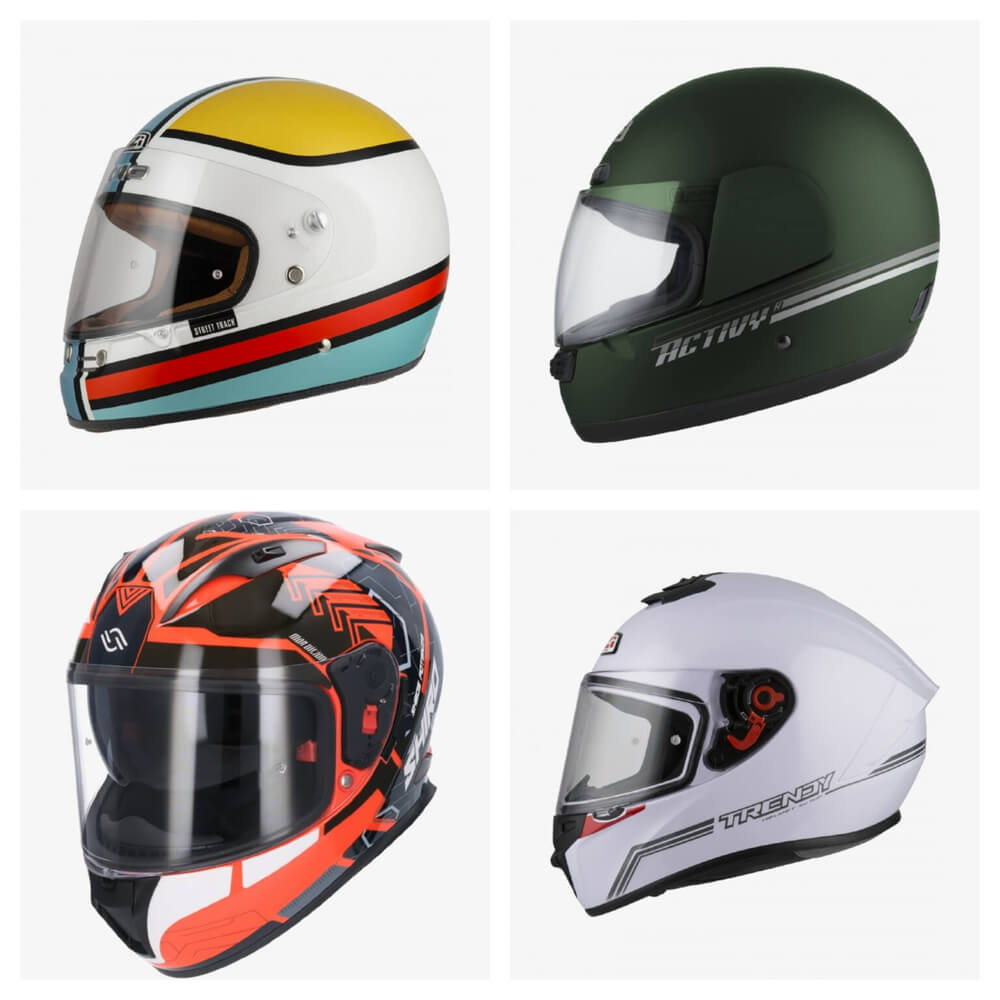The head is the most delicated part of the body of a biker, being the helmet an essential element of protection. The quality of a helmet and its characteristics make the difference in the moment of an accident or crash. Here you can discover the types of motorcycle helmets and which one is the most suitable for you.
What are the different types of helmets?
Motorcycle helmets are usually organized based on their level of protection. These are the materials and characteristics of motorcycle helmets.
Open face helmets or Jet
This is the least safe model, although it is also the most affordable. These helmets leave a part of the face exposed, although some of them can be completely covered with a protective screen. This screen deflects the air, but is practically useless in the case of a fall.
These helmets offer advantages as well: they are lightweight and have a high field of vision. Open face motorcycle helmets can be stored in small spaces such as the seat of a scooter. However, experts do not recommend their use outside the city and, if they are used in villages, it is important to be aware of the lack of protection they offer in the event of an accident.
Trial and offroad helmets
Trial helmets are common among those who practice this sport, but they can also be worn in cities. This type of motorcycle helmet resists impacts better than jet helmets, although their level of protection is still poor.
Offroad helmets are very similar to trial helmets, although they offer special protection on the chin area, this does not exclude the fact that it is an open face helmet. They are also homologated for on-road use, but their safety level is still medium. Even so, they offer advantages for city use, such as good ventilation, reduced weight and a sun visor. This helmet is designed to be used with professional or motocross goggles.
Modular helmets
These helmets are the most versatile, as they can be used both on motorcycles and on the road, making them one of the most safe and secure. Modular helmets have a flip-up mechanism that allows you to convert an open face helmet into a full-face helmet..
It is not allowed to ride with the chin guard folded down, unless they comply with double homologation. These helmets are only useful for bikers who make continuous stops and need to deploy the visor of the helmet without having to remove it continuously.
Full-face helmet
This compact helmet consists of a single piece and covers the entire head, face and chin. Full face helmets are the best type of motorcycle helmet for city and road riding.
These helmets tend to be somewhat heavy and have a smaller angle of vision than other models, but they protect better your head, reducing the risk of serious injury. Full-face helmets are very diverse, therefore not all of them offer the same safety in the case of an impact. Nevertheless, the lightest and best fitting helmets will be the most comfortable, and also the safest in an accident.
Best materials for motorcycle helmets
You can see the level of seccurity that a helmet can offer for its type, but also by the material they are made of. We can find trial or offroad helmets that are more resistant to side or rear impacts than full-face helmets, even though the latter offer full protection for the head, face and chin.
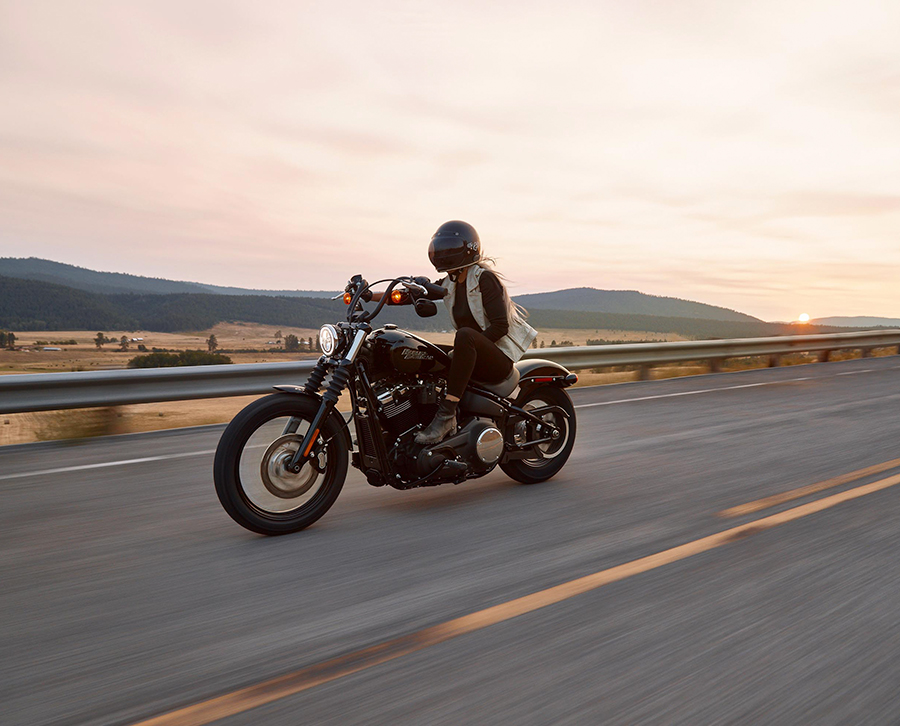
The homologated motorcycle helmets are usually made of similar materials: thermoplastic, fiberglass and carbon fiber for the outer shell and padded materials for the interior. The exterior is the part that absorbs the shock, but the inside prevents injury to the biker's face resulting from the impact or displacement of the helmet.
All three external materials are safe and homologated, but carbon fiber or aramid are the most resistant. Fiberglass is the best price-quality material, while thermoplastic provides similar protection but has a shorter lifespan.
